



Your free- source of information, news, and deep dive into the latest science in the world or fitness and health. We dive deep into the literature and debunk a lot of fake claims. Also, providing helpful tips and workouts to improve your health and quality of life.
Rhodiola Rosea is a popular plant in traditional medical systems in the Nordic countries, Eastern Europe, and Asia. It belongs to the family of Crassulaceae with notoriety for stimulating physical endurance, attention span, memory, and work productivity . The genus Rhodiola contains more than 100 different species, and at least 20 of these are used in traditional Asian medicine . However, the most of all animal and human studies have been conducted on RR, so whether other species confer the same health benefits is unknown .Research studies on the RR root phytochemistry have revealed the presence of six distinct groups of chemical compounds: phenylpropanoids (rosavin, rosin, and rosarin), phenylethanol derivatives (salidroside and tyrosol), flavonoids (rhodiolin, rhodionin, rodiosin, acetylrodalgin, and tricin), monoterpernes (rosiridol and rosaridin), triterpenes (daucosterol and beta-sitosterol), and phenolic acids (chlorogenic, hydroxycinnamic, and gallic acids) Rhodiola rosea L., also known as “golden root” or “roseroot,” belongs to the plant family Crassulaceae. RR grows primarily in dry sandy ground at high altitudes in the arctic areas of Europe and Asia. The plant reaches a height of 12–30 inches (70 cm) and produces yellow blossoms. It is a perennial with a thick rhizome and fragrant when cut. The Greek physician, Dioscorides, first recorded medicinal applications of rodia riza in CE 77 in De Materia Medica. The traditional use of RR as a tonic in Siberian and Russian medicine stimulated extensive research leading to identification of RR as an adaptogen—a substance that nonspecifically increases the resistance of an organism and does not disturb normal biological parameters.
Rhodiola show increased levels of beta-endorphin in the brain. Beta-endorphin is the stress-relieving, feel-good, analgesic peptide
The main effects of genus Rhodiola described are adaptogenic, that means “natural herbal products that are nontoxic in normal doses produce a nonspecific response and have a normalizing physiologic influence,” and stress protective. Moreover, Rhodiola has been described as an antioxidant, antitumor, antidepressive, neuroprotective, cardioprotective, hepatoprotective, and immunostimulating agent. Many other benefits from the use of RR have been found, including its ability to regulate blood sugar levels for diabetics and to activate the lipolytic processes. Although detailed molecular mechanism of the lipid-lowering and antiinflammation effects of salidroside are to be identified, in vivo studies on high-fat diet–fed LDLr−/−mice demonstrated that this RR compound reduced serum lipid levels and decreased atherosclerotic plaque formation. A number of studies have shown that RR increased physical work capacity and dramatically shortened the recovery time between bouts of high-intensity exercise.
Rhodiola seems to reduce anxiety and various stress symptoms, particularly fatigue, while simultaneously improving cognitive and physical performance in stressful situations.
Rhodiola supplements are low in cost but high in value



The main effects of genus Rhodiola described are adaptogenic, that means “natural herbal products that are nontoxic in normal doses produce a nonspecific response and have a normalizing physiologic influence,” and stress protective. Moreover, Rhodiola has been described as an antioxidant, antitumor, antidepressive, neuroprotective, cardioprotective, hepatoprotective, and immunostimulating agent.
Synthesizing proteins involved in stress resistance
Enhancing physical and mental resilience and performance in times of stress.
Reduce anxiety and various stress symptoms.
[1] Panossian A, Wikman G, Wagner H. Plant adaptogens. III. Earlier and more recent aspects and concepts on their modes of action.
Phytomedicine 1999;6(4):287–300.
[2] Panossian A, Wikman G, Wagner H. Effects of adaptogens on the central nervous system and the molecular mechanisms associated with their
stress-protective activity. Pharmaceuticals 2010;3:188–224.
[3] Elliott GR, Eisdorfer C, editors. Conceptual issues in stress research. Stress and human health: analysis and implications of research.
New York: Springer; 1982.
[4] Panossian A, Gabrielian E, Wagner H. On the mechanism of action of plant adaptogens with particular reference to Cucurbitacin R diglucoside.Phytomedicine 1999;6:147–155.
[5] Panossian A, Wagner H. Adaptogens. A review of their history, biological activity, and clinical benefits. HerbalGram 2012;90:52–63.
[6] Panossian A, Hamm R, Wikman G, et al. Synergy and antagonism of active constituents of ADAPT-232 on transcriptional level of metabolic
regulation in isolated neuroglia cells. Front Neurosci 2013;7:16.
[7] Panossian A, Hamm R, Kadioglu O, et al. Mechanism of action of Rhodiola, salidroside, tyrosol and triandrin in isolated neuroglial cells: an
interactive pathway analysis of the downstream effects using RNA microarray data. Phytomedicine 2014;21:1325–1348.
[8] Cho J, Park W, Lee S. Ginsenoside-Rb1 from Panax ginseng C.A. Meyer activates estrogen receptor-alphaand -beta, independent of ligand
binding. J Clin Endocrinol Metab 2004;2004(89):3510–5.
[9] Panossian A, Seo EJ, Wikman G, et al. Synergy assessment of fixed combinations of Herba Andrographidis and Radix Eleutherococci extracts
by transcriptome-wide microarray profiling. Phytomedicine 2015;22:981–92.
[10] Panossian A. Adaptogen:tonic herbs for fatigue and stress. Alternative and Complementary Therapies 2003;9(6):327–31.
[11] Panossian A, Wagner H. Adaptogens. A review of their history, biological activity, and clinical benefits. HerbalGram 2011;90:52–63.
[12] Panossian A, Wikman G, Kaur P, et al. Adaptogens stimulate neuropeptide Y and HSP72 expression and release in neuroglia cells. Front
Neurosci 2009;6:6.
[13] Panossian A, Wikman G, Sarris J. Rosenroot (Rhodiola rosea):traditional use, chemical composition, pharmacology and clinical efficacy.
Phytomedicine 2010;17:481–93.
[14] Panossian A., Gerbar P. Potential Use of Plant Adaptogens in Age-Related Disorders. Complementary and Integrative Therapies for Mental
Health and Aging. New York: Oxford university press; 2016, pp. 197–211.
[15] Abascal K, Yarnell E. Increasing vitality with adaptogens: multifaceted herbs for treating physical and mental stress. Altern Complement
Ther 2003;9(2):54–60.
[16] Bagchi D, Nair S, Sen CK. Nutrition and enhanced sports performance: muscle building, endurance, and strength. Academic Press; 2013.
[17] Molinos Domene Á. Effects of adaptogen supplementation on sport performance. A recent review of published studies. 2013.
[18] Panossian A, Wikman G. Pharmacology of Schisandra chinensis Bail.: an overview of Russian research and uses in medicine. J Ethnopharmacol
2008;118:183–212.
[19] Kraemer WJ, Ratamess NA. Fundamentals of resistance training: progression and exercise prescription. Med Sci Sports Exerc 2004:674–88.
[PubMed].
[20] Singh N, Nath R, Lata A, Singh SP, Kohli RP, Bhargava KP. (Ashwagandha), a rejuvenating herbal drug which enhances survival during
stress (an adaptogen). Pharmaceut Biol 1982:29–35.
[21] Kulkarni SK, Dhir A. Withania somnifera: an Indian ginseng. Prog Neuro Psychopharmacol Biol Psychiatr 2008:1093–105. [PubMed].
[22] Sharma S, Dahanukar SA, Karandikar SM. Effects of long term administration of the roots of ashwagandha and shatavari in rats. Indian
Drugs 1985;29:1339.
[23] Prakash J, Gupta SK, Dinda AK. Withania somnifera root extract prevents DMBA-induced squamous cell carcinoma of skin in Swiss albino
mice. Nutr Cancer 2002;42:91–7.
[24] Singh A, Naidu PS, Gupta S, Kulkarni SK. Effect of natural and synthetic antioxidants in a mouse model of chronic fatigue syndrome. J Med
Food 2002;5:211–220.
Davis L, Kuttan G. Immunomodulatory activity of Withania somnifera. J Ethnopharmacol 2000;71(1–2):193–200.
[26] Davis L, Kuttan G. Effect of Withania somnifera on cytokine production in normal and cyclophosphamide treated mice. Immunopharmacol
Immunotoxicol 1999;21(4):695–703.
[27] Archana R, Namasivayam A. Antistressor effect of Withania somnifera. J Ethnopharmacol 1999;64(1):91–3.
[28] Chandrasekhar K, Kapoor J, Anishetty S. A prospective, randomized double-blind, placebo-controlled study of safety and efficacy of a highconcentration
full-spectrum extract of ashwagandha root in reducing stress and anxiety in adults. Indian J Psychol Med 2012;34(3):255–62.
https://doi.org/10.4103/0253-7176.106022. [PMC free article] [PubMed] [Cross Ref].
[29] Ambiye R, Langade D, Dongre S, Aptikar P, Kulkarni M, Dongre A. Clinical evaluation of the spermatogenic activity of the root extract
of Ashwagandha (Withania somnifera) in oligospermic males: A Pilot Study. In: Evidence-based complementary and alternative medicine.
November 2013;2013:1–7.
[30] Bhattacharya SK, Satyan KS, Ghosal S. Antioxidant activity of glycowithanolides from Withania somnifera. Indian J Exp Biol 1997;35:236–9.
[31] Kapoor LD. Handbook of Ayurvedic Medicinal Plants: Herbal Reference Library. Boca Raton (FL): CRC Press; 2000. p. 337.
[32] Upadhyay L, Tiwari AK, Agrawal A, Dubey GP. Stress-induced changes in brain level of biogenic amines modified by an indigenous drug.
Act Nerv Super (Praha) 1990;32(2):128–9.
[33] Ghosal S, et al. Immunomodulatory and CNS effects of sitoindosides IX and X, two new glycowithanolides from Withania somnifera. Phytother
Res 1989;3(5):201–6.
[34] Bhattacharya SK, Goel RK, Kaur R, Ghosal S. Anti-stress activity of sitoindosides VII and VIII. New acylsterylglucosides from Withania somnifera.
Phytother Res 1987;1:32–7.
[35] Changhadi Govardhan Sharma. Ashwagandharishta – Rastantra Sar Evam Sidhyaprayog Sangrah – Krishna-Gopal Ayurveda Bhawan
(Dharmarth Trust), Nagpur; 1938, p. 743–744.
[36] Gautam A, Wadhwa R, Thakur MK, Shah N, Widodo N, Nakamoto T. Involvement of hippocampal Arc in amnesia and its recovery by alcoholic
extract of ashwagandha leaves. Neurobiol Learn Mem 2013;106(10):177–84.
[37] Ghosal S, Srivastava RS, Bhattacharya SK, Upadhyay SN, Jaiswal AK, Chattopadhyay U. Immunomodulatory and CNS effects of sitoindosides
IX and X, two new glycowithanolides form Withania somnifera. Phytother Res 1989;2:201–206.
[38] Atta-ur-Rahman, Jamal AS, Choudhary MI, Asif I. Two withanolides from Withania somnifera. Phytochem 1991;30:3824–5.
[39] Sale DG, Singh BB, Dagenais S. Neural adaptation to resistance trainingWithania somnifera. Med Sci Sports Exerc 1988;20
(5 Suppl.):S135–45.
[40] Staron RS, Karapondo DL, Kraemer WJ, Fry AC, Gordon SE, El FJ, Hagerman FC, Hikida RS. Skeletal muscle adaptations during early phase
of heavy-resistance training in men and womenWithania somnifera. J Appl Physiol 1994;76:1247–55. [PubMed].
[41] Chodzko-Zajko WJ, Proctor DN, Fiatarone Singh MA, Minson CT, Nigg CR, Salem GJ, Skinner JS. American College of Sports Medicine position
stand. Progression models in resistance training for healthy adults. Med Sci Sports Exerc 2009;41(3):687–708.
[42] Raut AA, Rege NN, Tadvi FM, Solanki PV, Kene KR, Shirolkar SG, et al. Exploratory study to evaluate tolerability, safety, and activity of
Ashwagandha (Withania somnifera) in healthy volunteers. J Ayurveda Integr Med 2012;3:111–4.
[43] Sandhu JS, Shah B, Shenoy S, Chauhan S, Lavekar GS, Padhi MM. Effects of Withania somnifera (Ashwagandha) and Terminalia arjuna (Arjuna)
on physical performance and cardiorespiratory endurance in healthy young adults. Int J Ayurveda Res 2010;1(5 Suppl.):144–9.
[44] Shenoy S, Chaskar U, Sandhu JS, Paadhi MM, Gordon SE, El FJ, Hagerman FC, Hikida RS. Effects of eight-week supplementation of ashwagandha
on cardiorespiratory endurance in elite Indian cyclists. J Ayurveda Integr Med 2012;3:209–214.
[45] Tiwari R, Chakraborty S, Saminathan M, Dhama K, Singh SV. Ashwagandha (Withania somnifera): Role in Safeguarding Health,
Immunomodulatory Effects, Combating Infections and Therapeutic Applications: A Review. J Biol Sci 2014;14:77–94.
[46] Dubichev AG, Kurkin BA, Zapesochnaya GG, Vornotzov ED. Study of Rhodiola rosea root chemical composition using HPLC. Cemico Pharm J
1991;2:188–93.
[47] Ishaque S, Shamseer L, Bukutu C, Vohra S. Rhodiola rosea for physical and mental fatigue: a systematic review. BMC Complement Altern Med
2012;12(70):2–9.
[48] Brown RP, Gerbarg PL, Graham B. The Rhodiola revolution: transform your health with the herbal breakthrough of the 21st Century.
Emmaus, PA USA: Rodale Press; 2005.
[49] Morgan M, Bone K, Shenoy S, Chauhan S, Lavekar GS, Padhi MM. Rhodiola rosea-RhodiolaTerminalia arjuna. MediHerb Newslett
2005;47:1–4.
[50] Brown RP, Gerbarg PL, Ramazanov Z. Rhodiola rosea. A phytomedicinal overview. HerbalGram 2002;56:40–52.
[51] Kelly GS. Rhodiola rosea: a possible plant adaptogen. Altern Med Rev 2001;6:293–302.
[52] Xie JT, McHendale S, Yuan CS. Ginseng and diabetes. Am J Chin Med 2005;33(3):397–404.
[53] De Bock K, Eijnde BO, Ramaekers M, Hespel P. Acute Rhodiola rosea intake can improve endurance exercise performance. Int J Sport Nutr
Exerc Metab 2004;14:298–307.
[54] Olsson EMG, von Schéele B, Panossian AG. A randomised, double-blind, placebo-controlled, parallel-group study of the standardised extract
shr-5 of the roots of Rhodiola rosea in the treatment of subjects with stress-related fatigue. Planta Med 2009;75:105–12.
[55] Chen CH, Chan HC, Chu YT, Ho HY, Chen PY, et al. Antioxidant activity of some plant extracts towards xanthine oxidase, lipoxygenase and
tyrosinaseRhodiola rosea. Molecules 2009;14:2947–58.
[56] Calcabrini C, De Bellis R, Mancini U, Cucchiarini L, Potenza L, et al. Rhodiola rosea ability to enrich cellular antioxidant defences of cultured
human keratinocytes. Arch Dermatol Res 2010;302:191–200.
[57] Yang L, Wu J, Chen H, Li H, Tang Y, et al. Antidepressant potential of chlorogenic acid-enriched extract from Eucommia ulmoides Oliver bark
with neuron protection and promotion of serotonin release through enhancing synapsin I expression. Molecules 2016;21:1–17.
[58] Zhang BC, Li WM, Guo R, Xu YW. Salidroside decreases atherosclerotic plaque formation in low-density lipoprotein receptor deficient mice.
Evid Based Complement Altern Med 2012:607508.
[59] Ross SM. Rhodiola rosea (SHR-5), Part 2: a standardized extract of Rhodiola rosea is shown to be effective in the treatment of mild to moderate
depression. Holist Nurs Pract 2014;28:217–21.
[60] Ding Z, Lu W, Li H, Fu J, Piao Z. Simultaneous determination of five lignans in Schisandra chinensis by HPLC. Zhongguo Zhong Yao Za Zhi
2010;35(13):1728–30.
Chen S-P, Liu RH, Tsong-Ming L, Wei JC-C, Tzu-Chin W, Tsai W-Y, Yang C-C. Complementary usage of Rhodiola crenulata (L.) in chronic
obstructive pulmonary disease patients: the effects on Cytokines and T cells. Phytother Res 2015;29:518–25.
[62] Yang L, Scott KA, Hyun J, Tamashiro KL, Tray N, Moran TH, Bi S. Role of dorsomedial hypothalamic neuropeptide Y in modulating food
intake and energy balance. J Neurosci 2009;29:179–90.
[63] Nan JX, Song EK, Kim JH, Kim JS, Cho H. Hepatoprotective phenolic constituents of Rhodiola sachalinensis on tacrine-induced cytotoxicity in
Hep G2 cells. Phytother Res 2003;17:563–5.
[64] Nan JX, Wu YL, Lian LH, Jiang YZ. Hepatoprotective effects of salidroside on fulminant hepatic failure induced by D-galactosamine and
lipopolysaccharide in mice. J Pharm Pharmacol 2009;61:1375–82.
[65] Bany J, Zdanowska D, Skopinska-Rózewska E, Sommer E, Siwicki AK, Wasiutynski A. The effect of Rhodiola rosea extracts on the bacterial
infection in mice. Centr Eur J Immunol 2009;34:35–7.
[66] Siwicki AK, Skopinska-Rózewska E, Wasiutynski A, Wójcik R, Zdanowski R, et al. The effect of Rhodiola kirilowii extracts on pigs’ blood
leukocytes metabolic (RBA) and proliferative (LPS) activity, and on the bacterial infection and blood leukocytes number in mice. Centr Eur J
Immunol 2012;37:145–50.
[67] Mishra KP, Ganju L, Singh SB, Ho HY, Chen PY. Anti-cellular and immunomodulatory potential of aqueous extract of Rhodiola imbricata
rhizome. Immunopharmacol Immunotoxicol 2012;34:513–8.
[68] Kim S-H, Lee H-S. Antibacterial Activity of Silver-nanoparticles Against Staphylococcus aureus and Escherichia coli Korean J Microbiol
Biotechnol 2011;39(1):77–85.
[69] Xu J, Li Y. Effects of salidroside on exhaustive exercise-induced oxidative stress in rats. Mol Med Rep 2012;6(5):1195–8.
[70] Saratikov AS, Krasnov EA. The influence of Rhodiola on endocrineglands and the liver. Chapter VI. In: Saratikov AS, Krasnov EA, editors.
Rhodiola rosea is avaluable medicinal plant (Golden Root). Tomsk (Russia): Tomsk State University; 1987. p. 180–93.
[71] Salnik BU. Effect of several stimulators on central nervous system energy metabolism during muscular workload [dissertation]. Tomsk,
Russia: Tomsk State Medical Institute; 1970.
[72] Adamchuk LB. Effects of Rhodiola on the process of energetic recovery of rat under intense muscular workload [dissertation]. Tomsk, Russia:
Tomsk State Medical Institute; 1969.
[73] Danbueva EA, Effect of stimulators of the central nervous system on lipid metabolism at different muscular workloads [dissertation]. Tomsk,
Russia: Tomsk State Medical Institute; 1968.
[74] Kurkin VA, Dubishev AB, Titova IN. Neurotropic properties of some phytopreparations containing phenylpropanoids. Rastit Resursi
2003;3:115–22.
[75] Wiegant FA, Surinova S, Ytsma E, Langelaar–Makkinje M, Wikman G, Post JA. Plant adaptogens increase lifespan and stress resistance in
C.elegans. Biogerontology 2009;10:27–42.